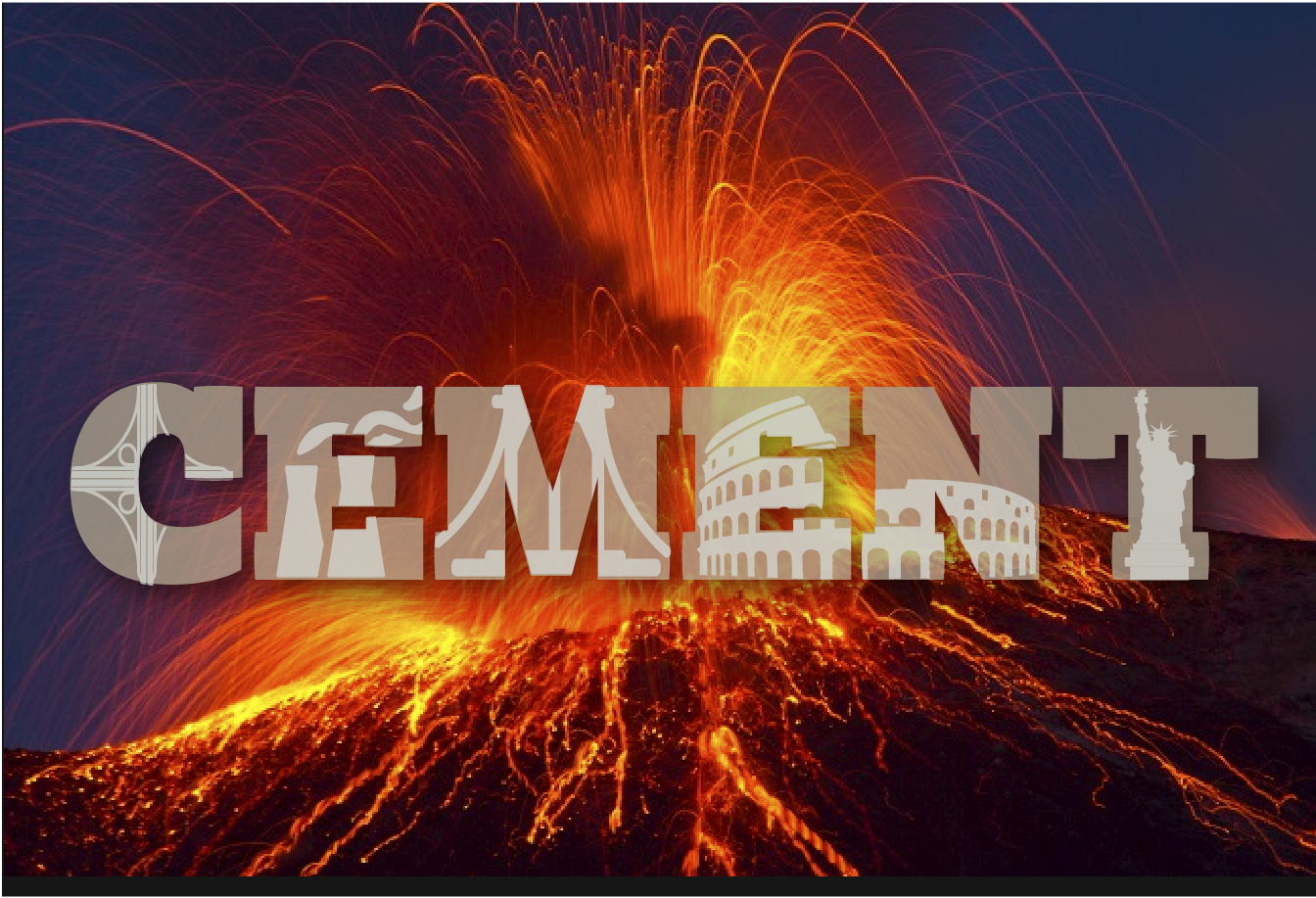
This Exploratory Topic would develop extremely durable concretes and cementitious materials to tackle technology challenges in the development of widely applicable concrete and cement. Cement is the second most used substance in the world (next to water), largely due to its low cost, abundance, and reliability in a wide variety of environments. Cement has been a LITERAL building block of society dating back to the ancient Egyptians, Greeks, and Romans, but current production and utilization methods pose significant energy and emissions challenges. These threaten cement’s growth as domestic infrastructure degrades with age.
Cement is important to U.S. energy production, as well as to infrastructure industry. The International Energy Agency estimated that in 2016 the cement and concrete sector consumed 10.5 exa-joules of energy and generated 2.2 gigatons of CO2 emissions globally. ARPA-E is seeking to develop novel materials for infrastructure with improved performance and lifetime and lower energy and emissions impacts. These projects present opportunities to develop material and process improvements that could improve the durability of cement, while maintaining or lowering production and deployment-related emissions. They could also ensure new types of cement are cost-competitive with existing traditional materials.
Program Director(s)
Dr. Joseph King
Projects Selected Within This Exploratory Topic
THE REGENTS OF THE UNIVERSITY OF CALIFORNIA
LOW-TEMPERATURE ARCHITECTED CEMENTATION AGENTS (LAMINAE)
Develop process to enable low-temperature activation of precursor materials that are geologically sourced and/or that comprise alkaline industrial wastes. Approaches provide alternatives to ordinary Portland cement that have significantly lower energy intensity and greatly enhanced durability.
THE REGENTS OF THE UNIVERSITY OF MICHIGAN
DEVELOPMENT OF AN EXTREMELY DURABLE CONCRETE (EDC) - A NOVEL APPROACH COUPLING CHEMISTRY AND AUTOGENOUS CRACK WIDTH CONTROL
Develop a novel ductile EDC that is resistant to chemical attacks and possesses built-in crack width control not feasible with current concrete. This new concrete is targeted to meet everyday construction requirements and have tensile resistance that dramatically enables efficient additive manufacturing and the construction of resilient energy facilities.
UNIVERSITY OF CALIFORNIA, SAN DIEGO
EXTREMELY DURABLE AND LOW-COST CONCRETE: ULTRALOW BINDER CONTENT AND ULTRAHIGH TENSILE DUCTILITY
Develop ultralow-binder-content ductile concrete (UDC), a low-cost, highly durable, strong, energy-efficient, and low-emission infrastructural material. UDC will be lower cost, greater ductility, and longer lifetime than ordinary portland cement.
GEORGIA INSTITUTE OF TECHNOLOGY
DEVELOPMENT OF AN ADVANCED ULTRASONIC PHASED ARRAY FOR THE CHARACTERIZATION OF THICK, REINFORCED CONCRETE COMPONENTS
Develop phased array technology to enable “medical quality” imaging and characterization of thick reinforced concrete components. This early detection technology could prioritize maintenance to avoid macrocrack formation which could significantly increase the durability of existing concrete components, reducing lifecycle energy and emissions costs.
UNIVERSITY OF KENTUCKY
BELITE CEMENT, AND CONCRETES; NOVEL LOW-ENERGY APPROACHES TO MAKING CONCRETE EXTREMELY DURABLE
Develop an extremely durable belite-based cement alternative to ordinary portland cement that is low-energy consuming and low-carbon releasing. The material would use less energy, release less CO2 and excel in performance and durability over time.
UNIVERSITY OF FLORIDA
BORON CONCRETE FOR ACTIVE FORMATION OF LITHIUM AS MITIGATION OF NEUTRON-INDUCED EXPANSION AND PASSIVE NEUTRON ABSORPTION
Develop a means to combat the damage that neutron exposure causes to concrete used to house nuclear reactors. The project will explore novel additives incorporating boron and will determine whether or not, when bombarded with neutron radiation, these can produce lithium that improves the concrete’s strength and extends its lifetime.
UNIVERSITY OF COLORADO BOULDER
GEOPOLYMER CEMENTS: RESISTANCE-ENGINEERED SEWER INFRASTRUCTURE FOR LONGEVITY USING INNOVATIVE, ENERGY-EFFICIENT, SYNTHESIS TECHNIQUES (RESILIENT)
Develop ultra-acid-resistant, low-calcium geopolymer cements that take advantage of reduced heat-curing and lower alkali conditions, for wastewater (i.e., sewer) and other infrastructure applications. The project aims to provide an alternative material technology solution that will extend the service life of concrete infrastructure and reduce total life cycle energy, economic, and environmental costs.
CARNEGIE MELLON UNIVERSITY
INTEGRATED DESIGN OF CHEMICAL ADMIXTURE SYSTEMS FOR ULTRADURABLE, LOW CO2 ALTERNATIVE BINDER CHEMISTRIES VIA MACHINE LEARNING
Develop a machine learning algorithm to guide the design of molecular additives that streamline the path for alternative binder chemistries concrete use in existing construction methods and equipment. The central goals are to increase the durability of US infrastructure by at least twofold and reduce the energy expended in producing this concrete by at least half.
WASHINGTON STATE UNIVERSITY
BIOPOLYMER MODIFIED CEMENTITIOUS SYSTEMS WITH RADICALLY SUPERIOR STRENGTH AND DURABILITY
Develop a scalable process to fortify cement paste at the atomic scale with biopolymer-based nanomaterials derived from chitin, a waste material produced by the seafood industry in millions of tons annually. The newly enabled concrete is envisioned to transform the U.S. construction market, saving of dollars in repair and reconstruction costs every year and dramatically improving lifecycle energy and emissions costs for infrastructure.
OREGON STATE UNIVERSITY
DEVELOPMENT OF THEROMDYNAMIC AND KINETIC SIMULATION TOOLS AND TESTING PROCEDURES FOR ENHANCED DURABILITY OF CONCRETE CONTAINING INDUSTRIAL BY-PRODUCTS
Develop computational tools to evaluate the feasibility of using industrial by-product materials to make low energy cements. The objective is to reduce energy demand and greenhouse emissions related to the production of cements, to leverage the practical economic benefits of low-energy binder systems, and to produce highly durable concrete.
UNIVERSITY OF UTAH
SELF-SUSTAINING CEMENTITIOUS SYSTEMS IN ROMAN REACTIVE GLASS CONCRETES
Develop extremely durable concretes with engineered foam glass aggregates that mimic the reactive volcanic glass of 2000-year-old Roman architectural and marine concretes. These innovative materials, mixtures and processing technologies, could improve durability at 4 times typical 50-year Portland cement concrete service life and reduce by up to 85% the energy and emissions associated with production and deployment.
C-CRETE TECHNOLOGIES
IRRADIATION, HEAT, AND CORROSION RESISTANT HEXAGONAL BORON NITRIDE-CEMENT COATING FOR MITIGATING AGING AND IRRADIATION EFFECTS IN NUCLEAR POWER PLANTS
Develop next generation cementitious coating materials to extend the lifetime of key infrastructures subject to extreme conditions such as nuclear power plants. Strategically couple emerging 2D materials technology with lamellar structure of low-CO2 cement to impart greater synergy.
Other Helpful Links
Learn about ARPA-E's additional extremely durable concretes and cementitious materials projects below:
